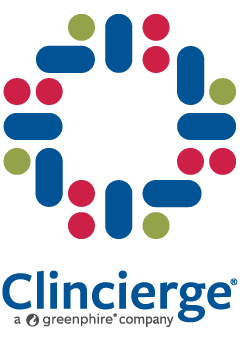Raising Awareness for Rare: Dysautonomia, Gaucher Disease, Niemann-Pick Disease, and Rett Syndrome
In the United States, a rare disease is a condition affecting less than 200,000 people. Taken as a whole, rare diseases are not actually rare; approximately 30 million Americans have been diagnosed with one.
Of the over 7,000 known rare diseases, only 5% currently have any form of treatment. With such staggering statistics, the need for increased awareness, education, and treatment options is imperative.
This month we’ll be taking a deeper look at four rare diseases: Dysautonomia, Gaucher Disease, Niemann-Pick Disease, and Rett Syndrome.
Dysautonomia Awareness Month
The term “dysautonomia” acts as a broad term to describe the group of medical conditions that affect the autonomic nervous system (ANS). The ANS is the part of the nervous system in charge of involuntary body functions like blood pressure, heart rate, breathing, digestion, skin and body temperature, and bladder function, to name a few.
Disorders fall into five groups under the umbrella of dysautonomia:
- Familial dysautonomia (FD) – FD is the genetic form of dysautonomia classified as a rare disease. This disorder subgroup affects Eastern European and Ashkenazi Jewish heritage at a much higher than average rate. This disease often causes a decreased sensitivity to pain, a lack of tear production, and difficulty regulating body temperature.
- Multiple system atrophy (MSA) – This life-threatening form of dysautonomia develops in those over the age of 40 and often results in low blood pressure and heart rate issues and can also affect bladder control.
- Neurocardiogenic syncope (NCS) – This is called situational syncope or vasovagal syncope, the most common form of dysautonomia and results in fainting spells. Some individuals will experience just a few of these events over a lifetime, while others will have multiple episodes each day.
- Postural orthostatic tachycardia syndrome (POTS) – Characterized by blood circulation issues, this type of dysautonomia often causes fainting, shortness of breath, and chest pain. The majority of those affected are women, with symptoms usually presenting during puberty.
- Pure autonomic failure – Individuals diagnosed with this disorder experience a sharp decrease in blood pressure upon standing and often suffer from dizziness, fainting, chest pain, visual issues, and exhaustion.
Gaucher Disease Awareness Month
Gaucher disease is named after Philipe Gaucher, the French physician who discovered the condition in 1882. This rare genetic disorder is autosomal recessive, meaning that both parents must be carriers of the disease for a child to be affected. The disease results in the buildup of fatty substances in organs like the spleen and liver, causing them to enlarge and slowing their functions. This buildup of substances can also occur in bone tissue, weakening the patient’s bones and affecting the blood’s ability to clot.
There are three types of Gaucher disease:
- Type I – This is the most common form of the disease and is also called the “non-neuropathic” type. Most patients are diagnosed in their late 20s, and those of Ashkenazi Jewish descent are diagnosed at a rate of 100 times than those of the general population.
- Type II – Also called acute infantile neuronopathic Gaucher disease, patients with this disease receive a diagnosis when they are an infant. Sadly, most do not survive to see their second birthday. Symptoms usually present in the first six months of life and include seizures, spasticity, and developmental delays.
- Type III – The most common form of these diseases, Type III is a chronic neuronopathic Gaucher disease. A diagnosis for this type occurs later in life, with some patients dying before turning 30. This form is prevalent in those of Swedish descent, particularly those from the Norrbotten region.
National Niemann-Pick Awareness Month
The group of genetic lipid disorders known as Niemann-Pick disease (NPD) was first identified by two German doctors in the early 1900s. Parents pass on this condition through a process referred to as autosomal recessive inheritance, meaning that both parents must possess the defective gene—types A and B result from a missing or inadequate enzyme known as sphingomyelinase. However, Type C is much rarer and results from the inability of these patients to process fats within their cells.
- Type A (NPA) – Pediatrician Albert Niemann recognized the Type A form in 1914. This variation presents in infants and results in severe, progressive brain deterioration. Most children die within a few years of their diagnosis.
- Type B (NPB) – Pathologist Ludwick Pick discovered the Type B variant in 1927. The median age of onset is during the pre-teen years. This form of the disease does not deteriorate the neurological system as severely as other types, allowing many patients to live into adulthood.
- Type C (NPC) – This final variation is classified as a rare disease and causes cholesterol and other fats to accumulate in the liver, lungs, spleen, and brain. This type of Niemann-Pick disease most often appears in infancy but can be diagnosed well into adulthood. This form of the disease is always fatal, and the age of diagnosis is commensurate with the age of death for NPC patients. Those diagnosed in infancy rarely live five years, while those diagnosed after the age of five can live about 20 years.
Rett Syndrome Awareness Month
Rett syndrome is a rare genetic neurological disease discovered in 1954 by Austrian pediatrician Andreas Rett. Rett became aware of two young patients with the same unique habit of making movements similar to handwashing. After discovering six other girls with similar behaviors, he traveled throughout Europe to find other patients, publishing his findings in 1966. Other doctors published similar results in the years to come, noting that the disease was much more prevalent in females. In 1999, researchers at Baylor College of Medicine in Houston, Texas, discovered that this disorder is an X-linked dominant disorder, confirming why it is more prevalent in females.
A diagnosis of Rett syndrome is typically made between six and 18 months, usually due to children missing critical developmental milestones. Symptoms include loss of speech and mobility, seizures, breathing issues, and a delay in growth for various limbs. Some Rett syndrome patients die young due to heart defects and epileptic events, but most live until their 40s or 50s.
October is a month to discover more about rare diseases and work together to increase education and research funding. With only 5% of all rare diseases having some form of treatment, rare disease clinical trials are even more critical. This patient population encounters many challenges unique to their illness, and they need specialized support systems to assist them from trial enrollment through completion.


